Definite articles are an essential part of English grammar, helping specify and clarify nouns in sentences. The most common definite article is “the,” which indicates a particular person, place, or thing that the speaker and listener both understand.
In this blog, we will explore definite articles, their meaning, usage, and examples to help you understand their role in English grammar. Mastering definite articles will make your sentences more precise and effective, enhancing your communication skills. This understanding will aid you in learning English online, similar to a spoken English language course.
इस blog में, हम definite articles के बारे में जानेंगे, उनके अर्थ,use, और examples को समझेंगे। यह आपके English grammar को अधिक सटीक बनाएगा।
What is a Definite Article?
A definite article is a word that identifies a specific noun that is known to both the speaker and the listener. In English, “the” is the only definite article.
For example, “The dog barked at the stranger” refers to a particular dog and stranger already mentioned or understood in the context.
Definite article वह शब्द है जो किसी विशेष noun की पहचान करता है जो speaker और listener दोनों के लिए जाना जाता है। English में “the” ही एकमात्र definite article है।
जैसे, “The dog barked at the stranger” का मतलब है कि यहाँ एक खास कुत्ते और अजनबी की बात हो रही है।
Definition of Definite Articles
The definite article “the” is used to point to a specific noun, making it clear that the speaker is referring to something particular. It can precede both singular and plural nouns, as well as countable and uncountable nouns. For example:
- Singular: “The apple is red.”
- Plural: “The apples are on the table.”
- Uncountable: “The water is clean.”
Definite article “the” का use किसी खास noun को दर्शाने के लिए किया जाता है, जिससे यह स्पष्ट हो जाता है कि speaker किस विशेष चीज की बात कर रहा है। यह singular और plural दोनों nouns के साथ इस्तेमाल हो सकता है, और countable तथा uncountable nouns के साथ भी। जैसे:
- Singular: “सेब लाल है।”
- Plural: “सेब मेज़ पर हैं।”
- Uncountable: “पानी साफ है।”
Tricky Definite Article Examples
While using “the” is generally straightforward, some common mistakes occur when it’s used unnecessarily or omitted incorrectly.
- Referring to General Concepts
Incorrect: “The love is important in life.”
Correct: “Love is important in life.”
Hindi: “प्यार जीवन में महत्वपूर्ण है।”
Note: General concepts don’t need “the.” - Before Proper Nouns
Incorrect: “The India is a beautiful country.”
Correct: “India is a beautiful country.”
Hindi: “भारत एक सुंदर देश है।”
Note: Do not use “the” with proper nouns unless referring to specific entities like “The United States.” - Redundant Use
Incorrect: “I went to the school for a meeting.”
Correct: “I went to school for a meeting.” (Unless referring to a specific school building.)
Hindi: “मैं एक meeting के लिए School गया।”
Definite Articles Sentences
Here are some examples of sentences with definite articles, along with their Hindi translations:
- English: “The cat is on the roof.”
Hindi: “बिल्ली छत पर है।” - English: “The teacher explained the lesson clearly.”
Hindi: “Teacher ने lesson को स्पष्ट रूप से समझाया।” - English: “We visited the Taj Mahal last year.”
Hindi: “हमने पिछले साल ताजमहल का दौरा किया।” - English: “The moon was shining brightly in the sky.”
Hindi: “चांद आकाश में तेज़ चमक रहा था।” - English: “The car parked outside is mine.”
Hindi: “बाहर खड़ी गाड़ी मेरी है।”
When Do We Use Definite Articles?
Definite articles are used to specify particular nouns that are already known to the speaker and listener. In English, “the” is the only definite article. It provides clarity by indicating something specific rather than general. For example, in sentences like “The sun is bright today” or “She picked up the book on the table,” the definite article “the” points to something already identified or understood in the context.
हम definite article “the” का use किसी विशेष noun को दर्शाने के लिए करते हैं, जो पहले से ही speaker और listener दोनों के लिए ज्ञात होता है। जैसे, “सूरज आज तेज चमक रहा है” या “उसने मेज पर रखी किताब उठाई,” में definite article “the” किसी खास चीज़ की ओर इशारा करता है।
Rules for Using Definite Articles
1. Referring to Specific Nouns
Use “the” when referring to a noun that is specific or previously mentioned.
Example:
English: “The cat is sitting on the roof.”
Hindi: “बिल्ली छत पर बैठी है।”
Here, “the” specifies a particular cat known to the speaker and listener.
2. Indicating Unique Objects
“The” is used with objects or concepts that are one of a kind or universally recognized.
Example:
English: “The moon is shining brightly.”
Hindi: “चांद तेज चमक रहा है।”
The definite article emphasizes the unique identity of the moon.
3. Superlative Adjectives and Ordinals
Use “the” with superlatives and ordinal numbers to highlight something specific.
Example:
English: “She is the tallest in the class.”
Hindi: “वह कक्षा में सबसे लंबी है।”
English: “This is the first time I am visiting.”
Hindi: “यह पहली बार है जब मैं आया हूँ।”
4. Specific Groups or Categories
Use “the” to refer to an entire group or category.
Example:
English: “The rich must help the poor.”
Hindi: “अमीरों को गरीबों की मदद करनी चाहिए।”
5. With Geographical Names
Use “the” with names of rivers, oceans, mountain ranges, and certain countries.
Example:
English: “The Nile is the longest river.”
Hindi: “नाइल सबसे लंबी नदी है।”
English: “We went to the Maldives.”
Hindi: “हम Maldives गए।”
6. Before Unique Titles or Positions
Use “the” before titles when referring to a specific person or group holding that title.
Rule: Use “the” before official titles when it points to a particular role or person.
Example:
English: “The President will address the nation today.”
Hindi: “राष्ट्रपति आज राष्ट्र को संबोधित करेंगे।”
7. For Names of Musical Instruments
“The” is used when referring to a musical instrument in general or as a concept.
Rule: Always use “the” with musical instruments when speaking about them in general.
Example:
English: “She plays the piano beautifully.”
Hindi: “वह Piano बहुत अच्छे से बजाती है।”
8. Before Names of Newspapers, Hotels, and Ships
Use “the” with names of newspapers, famous hotels, and ships.
Rule: Always precede these nouns with “the.”
Example:
English: “I read the Times of India daily.”
Hindi: “मैं रोज़ Times of India पढ़ता हूँ।”
English: “The Titanic sank in 1912.”
Hindi: “Titanic 1912 में डूब गया।”
Common Errors with Definite Articles
Using the definite article “the” correctly is essential for clear and precise communication. Below are typical mistakes to avoid while using “the,” along with examples in English and Hindi.
1. Using “The” with General Nouns
A common error is using “the” before nouns that refer to general or unspecific things.
Example:
Incorrect: “The trees provide oxygen.” (when speaking generally)
Correction: “Trees provide oxygen.”
Hindi:
गलत:“वे पेड़ oxygen प्रदान करते हैं।”
सही: “पेड़ oxygen प्रदान करते हैं।”
2. Omitting “The” with Specific Nouns
Forgetting to use “the” before nouns that are unique or already specified can make the sentence unclear.
Example:
Incorrect: “Sun rises in east.”
Correction: “The sun rises in the east.”
Hindi:
गलत: “सूरज पूर्व में उगता।”
सही: “सूरज पूर्व में उगता है।”
3. Using “The” with Proper Nouns
“The” is usually not used with proper nouns like names of people or cities, but exceptions exist for certain geographical names and institutions.
Example:
Incorrect: “The Delhi is a large city.”
Correction: “Delhi is a large city.”
Exception: “The Himalayas are a mountain range.”
Hindi:
गलत: “वह Delhi एक बड़ा शहर है।”
सही: “Delhi एक बड़ा शहर है।”
अपवाद: “हिमालय एक पर्वत श्रृंखला है।”
4. Repeating “The” Unnecessarily
Avoid using “the” multiple times in a list unless specifying distinct items.
Example:
Incorrect: “The apples, the bananas, and the oranges are on sale.”
Correction: “The apples, bananas, and oranges are on sale.”
Hindi:
गलत: “वह सेब, वह केले, और वह संतरे बिक्री पर हैं।”
सही: “सेब, केले, और संतरे बिक्री पर हैं।”
5. Using “The” with Uncountable Nouns
“The” is not used with uncountable nouns when they are mentioned in a general sense.
Example:
Incorrect: “The water is essential for life.” (when speaking generally)
Correction: “Water is essential for life.”
Hindi:
गलत: “वह पानी जीवन के लिए आवश्यक है।”
सही: “पानी जीवन के लिए आवश्यक है।”
6. Omitting “The” Before Unique Items or Titles
Forgetting “the” before unique nouns or well-known titles can make sentences sound awkward.
Example:
Incorrect: “I visited Eiffel Tower.”
Correction: “I visited the Eiffel Tower.”
Hindi:
गलत: “”मैं Eiffel Tower को गया।”
सही: “मैं Eiffel Tower गया।”
Difference Between Definite Articles and Indefinite Articles
The main difference between definite articles and indefinite articles lies in how they specify nouns.
definite articles और indefinite articles के बीच मुख्य अंतर यह है कि ये nouns को कैसे निर्दिष्ट करते हैं।
Definite Articles (“The”):
Used to refer to a specific or particular noun that is known to the speaker and the listener. It emphasizes uniqueness or a previously mentioned noun.
इसका use किसी विशेष या पहले से ज्ञात noun के लिए किया जाता है।यह विशिष्टता या पहले उल्लेखित वस्तु को दर्शाता है।
Example:
Sentence: “The sun rises in the east.”
Hindi: “सूरज पूरब में उगता है।”
Indefinite Articles (“A” and “An”):
Used to refer to nonspecific or general nouns. Typically used when the noun is mentioned for the first time or is not known to the listener.
इसका use सामान्य या पहली बार उल्लेखित nouns के लिए होता है। यह किसी अज्ञात या सामान्य noun को संदर्भित करता है।
Example:
Sentence: “A boy is playing in the park.”
Hindi: “एक लड़का पार्क में खेल रहा है।”
Comparison:
Definite Article Example
Sentence: “The book on the table is mine.”
Hindi: “टेबल पर रखी किताब मेरी है।”
Explanation: “The” refers to a specific book.
Indefinite Article Example
Sentence: “I saw a book on the table.”
Hindi: “मैंने टेबल पर एक किताब देखी।”
Explanation: “A” refers to any book, not a specific one.
Definite Article Example
Sentence: “The teacher is very experienced.”
Hindi: “Teacher बहुत अनुभवी हैं।”
Explanation: “The” specifies a particular teacher.
Indefinite Article Example
Sentence: “A teacher can change lives.”
Hindi: “एक Teacher जीवन बदल सकता है।”
Explanation: “A” refers to any teacher in general.
Practice Questions Related to Definite Articles
Fill in the blanks with the correct article:
- __ moon looks beautiful tonight.
- I saw __ elephant at the zoo yesterday.
- __ Mount Everest is the highest mountain in the world.
- She bought __ apple and shared it with her friend.
- Have you visited __ Taj Mahal?
- __ air was fresh and cool after the rain.
- __ book you gave me is very interesting.
- They went to __ park near their house.
- __ Pacific Ocean is the largest ocean on Earth.
- He wants to be __ artist when he grows up.
- __ stars were visible in the clear night sky.
- __ umbrella is necessary when it’s raining.
- __ earth revolves around the sun.
- He is reading __ novel by his favorite author.
- __ sun provides us with light and energy.
Answers:
- The
- An
- The
- An
- The
- The
- The
- The
- The
- An
- The
- An
- The
- A
- The
Frequently Asked Questions About Definite Articles
Q1: What is a definite article?
Answer: The definite article “the” is used to refer to a specific or particular noun that is known to the speaker and the listener. It highlights that the noun is unique or already mentioned.
Example: “The dog barked loudly.”
Q2: When should “the” be used in a sentence?
Answer: “The” is used when the noun is specific, known, or has already been mentioned in the conversation. It refers to something particular or unique.
Example: “The book on the table is mine.”
Q3: Can “the” be used with all nouns?
Answer: No, “the” is only used with singular and plural nouns that are specific or previously mentioned. It is not used with general nouns or when referring to things for the first time.
Example: “I saw a bird. The bird was colorful.” (First, an indefinite article “a” is used, then “the” is used to refer to the specific bird.)
Q4: Can “the” be used for both singular and plural nouns?
Answer: Yes, “the” can be used for both singular and plural nouns when they are specific or previously known.
Example: “The dog is friendly.” (singular)
“The dogs are friendly.” (plural)
Q5: When is “the” not used before a noun?
Answer: “The” is not used before general nouns, names of countries, cities, or languages, and with uncountable nouns when referring to them in a general sense.
Example: “I love music.”
“I visited Japan last year.”
Conclusion
We hope this blog on Definite Articles has given you a clear understanding of their role and importance in English. The definite article “the” helps to specify a particular noun that is known to both the speaker and the listener, making your communication more precise. Mastering the use of definite articles is essential for improving both written and spoken English. It allows you to construct more accurate sentences and convey your ideas clearly. For those looking to enhance their language skills, joining a Spoken English Course can provide the structured practice needed to refine your use of definite articles and boost your confidence in communication.Begin enhancing your English skills today!





